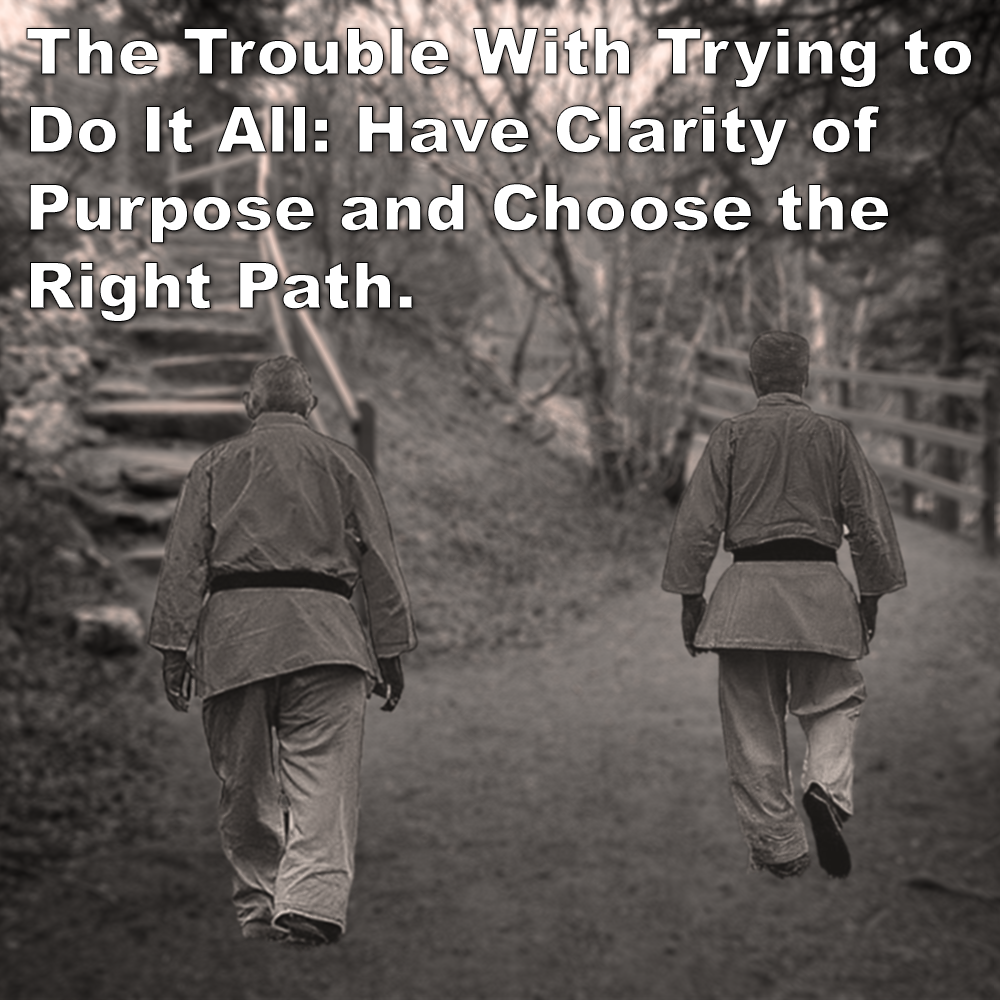
The Trouble With Trying to Do It All: Have Clarity of Purpose and Choose the Right Path.
Posted by ADAM CARTER on NOV 07, 2024

The Trouble With Trying to Do It All: Have Clarity of Purpose and Choose the Right Path.
(Approx 2 minute 45 second read)
All combat sports are one-on-one fights with rules. Self-protection, on the other hand, is not consensual fighting and should be approached differently.
Training for success in sport is designed to ensure success in sport. It makes little sense to train to develop one set of skills when they are not the skills you wish to actually attain.
If you want self-defense skills, then you should be training those skills. If you want sporting skills, then train for those. Both are good, and both have value. Sport is sport. Self-defense is self-defense. The trouble arises when you try to make a single art or approach fit all objectives.
I see so many karate schools advertise that they cover all aspects in one: sport, respect, self-confidence, anti-bullying, self-defense, etc. While that might sound great on a flyer, anyone with experience knows it’s not so simple.
You will fight how you train. Under stress, you will default to the actions you’ve spent the most time practicing. If you’re splitting your time between disciplines with fundamentally different objectives, skill sets, and rules – what happens when you’re in a situation where your training doesn’t match the reality you’re facing?
Let’s be clear: sport karate is excellent for athleticism, timing, and strategy within the framework of a competition. But those same habits don’t translate well when you’re suddenly confronted by an aggressive, untrained attacker in the real world. Similarly, self-defense training is focused on practicality, unpredictability, and surviving dangerous encounters. But those techniques don’t help much when the goal is to win a controlled, one-on-one competition with strict rules.
The reality is, trying to do everything at once often means doing none of it well. This is why clarity of purpose is so important. If your goal is to compete and win trophies, your training should reflect that. If your goal is to defend yourself effectively in real-world situations, your training must prepare you for chaos and unpredictability.
If your goal is to build confidence, respect, discipline, your training can focus on those values through repetition and guidance. Each of these goals are valid. Each has its place. But trying to combine them all into a single, unified training program often dilutes the effectiveness of each.
When I was younger, I lived for the thrill of sparring and competition. I didn’t think about self-defense or the nuances of training methods; I just wanted to fight and improve my skills on the mat. As I’ve gotten older, my goals have changed. I’ve come to understand that preparing for self-protection requires a different mindset and a different approach. It’s not about points, trophies, or elegant techniques – it’s about survival. And that requires training for messy, unpredictable encounters where the rules don’t exist.
I still enjoy a friendly sparring session now and then. There’s something energizing about the give-and-take of a good dual. But I no longer view it as the pinnacle of my training. Today, my focus is on practical application and preparing my students for the challenges they might face.
If there’s one lesson I’ve learned, it’s this: be honest about what you want out of your training. Take the time to understand your goals. If you want to compete, find a dojo that prioritizes sport. If you’re looking for self-defense, seek out training that focuses on practical, real-world scenarios. For instructors, be clear about what you’re offering. Don’t try to sell your program as “everything to everyone” unless you can truly deliver on that promise. Honesty builds trust, and trust is what keeps students coming back to train with you.
Whether you’re training for sport, self-defense, or personal growth, the path you take is yours to choose. Just remember: you will fight how you train. So train with purpose.
Written by Adam Carter – Shuri Dojo.
